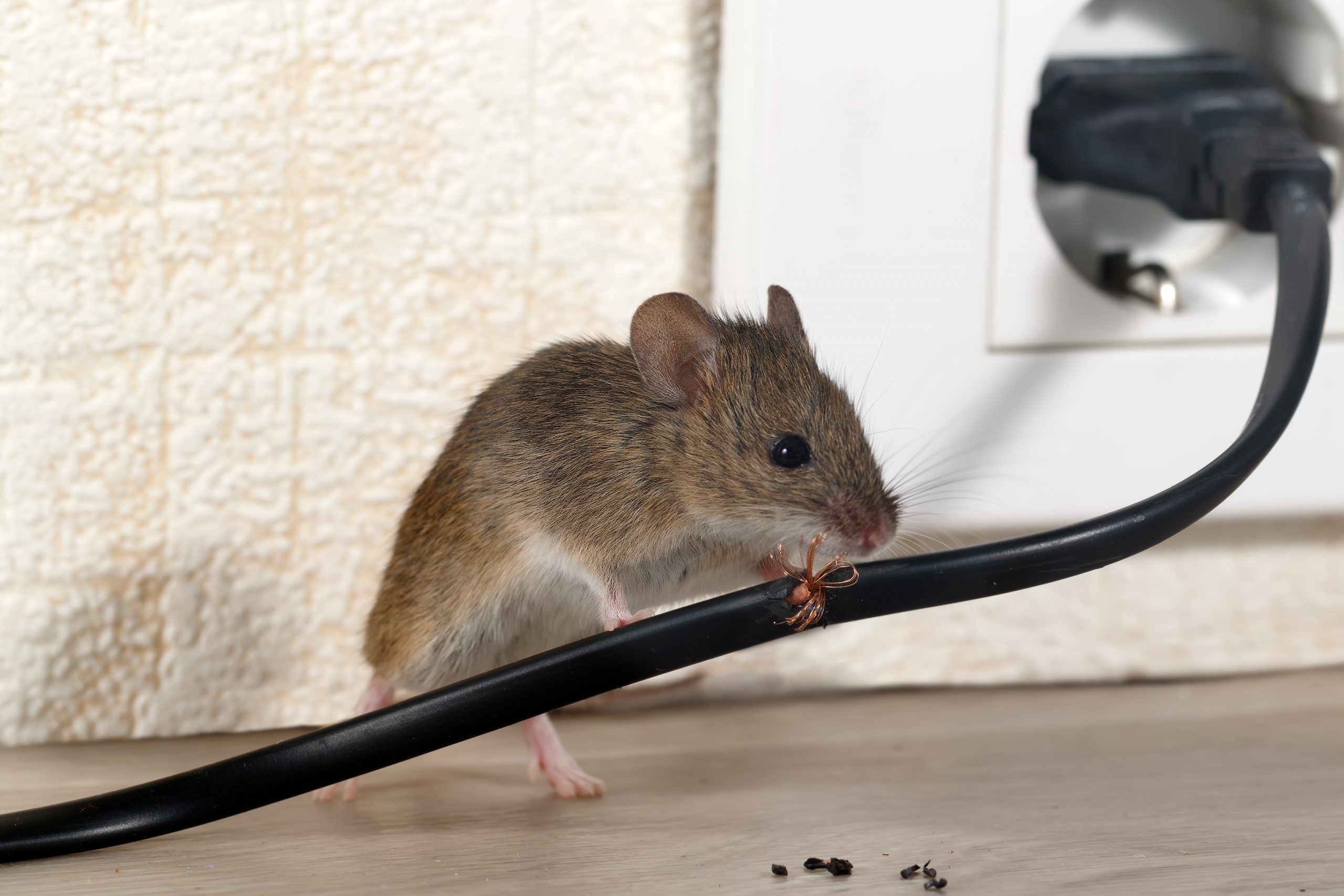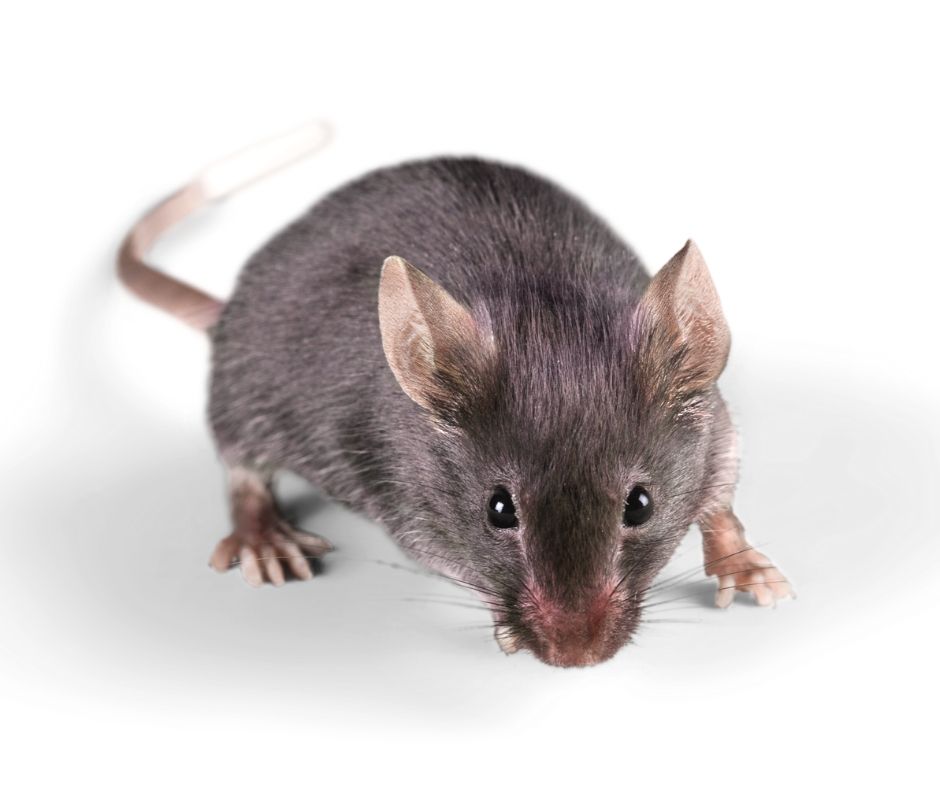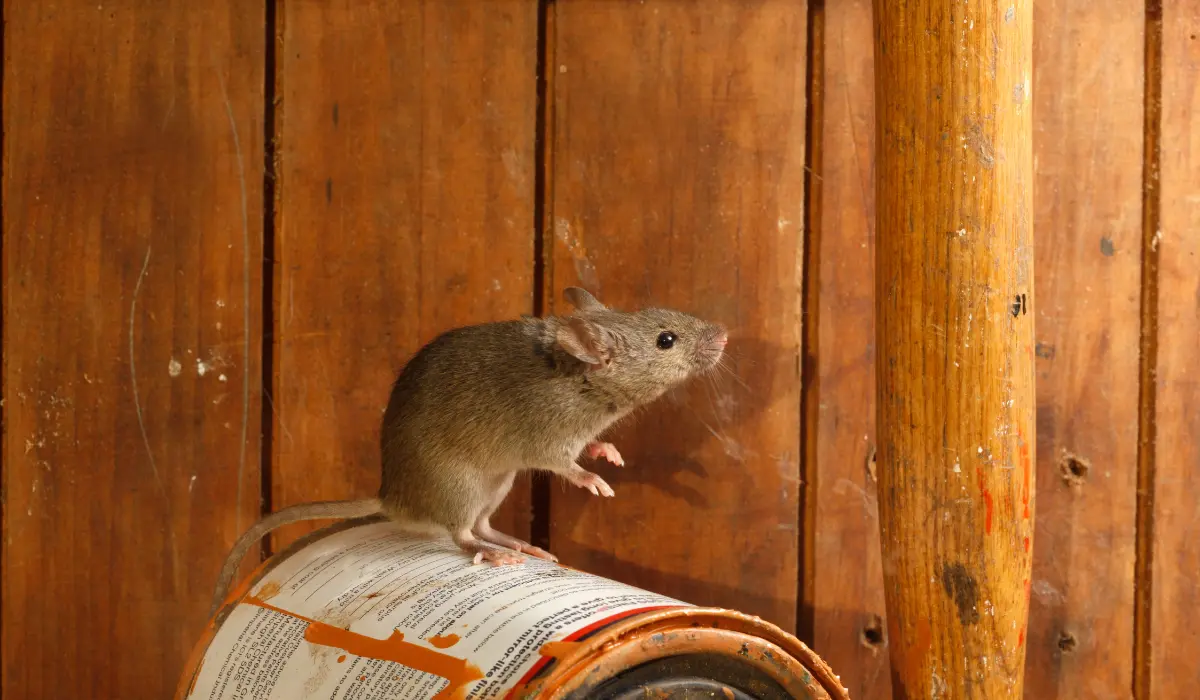Florida’s subtropical climate—featuring warm temperatures, moderate winters, and consistent humidity—offers mice and other rodents ample opportunities to stay active year-round. Unlike regions with harsh cold spells that naturally curtail breeding, Florida’s mild winter rarely disrupts mouse reproduction. In bustling areas such as Melbourne—where residential developments, commercial spaces, and recreational spots coexist—mice can slip inside unnoticed, quickly establishing nests in walls, attics, or hidden storage. This service page explains why mice flourish in Florida’s conditions, the indicators of an infestation, and why engaging a professional mice exterminator is essential for safeguarding your home or business.
Whether you manage a property in Melbourne or handle rentals in Melbourne Beach, Cocoa Beach, Cocoa, Cape Canaveral, Merritt Island, or Rockledge, identifying mouse activity early—and taking swift, targeted action—helps protect your structure from damage, reduces health risks, and prevents a burgeoning rodent population from taking root.
Why Mice Thrive in Florida
Mild Winter Temperatures
In colder states, freezing weather weakens or kills off many mice, forcing surviving populations to slow down for months. Florida’s mild winter seldom reaches subfreezing for extended periods, leaving mice free to forage and breed across all seasons. Climate-controlled buildings further stabilize comfortable ranges (around 65–85°F) for continuous mouse activity.
Abundant Food Sources
Mice are opportunistic feeders. Suburban neighborhoods around Melbourne provide numerous feeding options—pantry leftovers, unsealed pet food, or unsecured trash. Restaurants, grocery stores, or multi-family dwellings can inadvertently sustain mice if occupant practices don’t limit easy access to waste. Even small crumbs can lure mice into cupboards or behind appliances.
Accessible Water and Moisture
Frequent rainfall, yard irrigation, or minor leaks under sinks maintain a reliable water supply. Mice can survive on minimal moisture, so even small drips or condensation can sustain them. The combination of water and Florida’s warmth ensures nothing forces mice to curb their breeding cycle significantly.
Rapid Reproduction
A female mouse may produce multiple litters each year—each with five to six pups—maturing within weeks. Under Florida’s gentle climate, these young mice quickly spawn new litters if unchecked. An undetected few can turn into dozens rapidly if occupants or property managers don’t intervene.
Seasonal Traffic and Movement
From tourists to seasonal residents, the regular exchange of goods, groceries, or personal belongings between coastal and inland areas—like Cape Canaveral or Merritt Island—can introduce mice from one property to another. Cardboard boxes or stored crates might harbor hidden mice or droppings, further spreading infestations if not inspected.

Telltale Signs of a Mouse Infestation
- Droppings
- Small, rod-shaped pellets roughly ¼ inch long, often found near food pantries, under sinks, or in dim corners.
- Fresh droppings appear moist and dark; older ones look dry or crumbly.
- Small, rod-shaped pellets roughly ¼ inch long, often found near food pantries, under sinks, or in dim corners.
- Nocturnal Scratching or Squeaking
- Mice are most active after dark, scurrying through wall voids or attics.
- Frequent rustling or faint squeaking behind walls suggests a growing rodent presence.
- Mice are most active after dark, scurrying through wall voids or attics.
- Gnaw Marks and Chew Damage
- Mice must file down ever-growing incisors by chewing on wood, plastic, or cardboard.
- Check for ragged edges on stored foods, pet supplies, or building materials.
- Mice must file down ever-growing incisors by chewing on wood, plastic, or cardboard.
- Nests of Shredded Material
- Shredded paper, cloth, or insulation arranged in hidden corners, closets, or basements.
- These nests often contain droppings and a musky smell confirming rodent residence.
- Shredded paper, cloth, or insulation arranged in hidden corners, closets, or basements.
- Unusual Pet Behavior
- Cats or dogs staring at walls, barking at an empty corner, or pawing under doors might detect mice beyond occupant hearing.
- Sudden, intense interest in an overlooked area typically hints at hidden rodent movements.
- Cats or dogs staring at walls, barking at an empty corner, or pawing under doors might detect mice beyond occupant hearing.
- Musky or Ammonia-Like Odors
- Over time, accumulated urine or droppings produce a stale odor noticeable in unventilated spaces like attic corners or crawl spaces.
- The stronger the odor, the more significant the infestation likely is.
- Over time, accumulated urine or droppings produce a stale odor noticeable in unventilated spaces like attic corners or crawl spaces.
The Risks of Ignoring Mice
Disease and Contamination
Mice can carry pathogens such as salmonella in their droppings, urine, and saliva. When they trek across countertops or food cabinets, they deposit these bacteria, raising the risk of occupant illnesses or food poisoning. Airborne particles from dried droppings may also trigger respiratory problems.
Structural and Electrical Hazards
Rodent gnawing compromises wooden beams or drywall edges. Chewed wiring behind walls or ceilings can spark shorts or potential fires, necessitating expensive electrical rewiring. Over time, extensive hidden damage undermines structural stability and occupant safety.
Rapid Expansion
Florida’s mild climate supports year-round breeding. A small nest can balloon into a large-scale infestation in weeks if overlooked. Each wave of mice seeking fresh spots to forage can spread to additional rooms or adjacent units, especially in multi-family complexes.
Secondary Pest Introductions
Rodent nests often harbor fleas or ticks, imposing extra pests on occupants. Larger predators—like snakes, feral cats, or hawks—may roam near buildings if mice become abundant. Unresolved mice issues can cascade into multiple pest concerns.
Reputational or Financial Impact
For businesses—restaurants, stores, or lodging near Cocoa Beach or Rockledge—rodent sightings undermine customer trust, possibly triggering poor reviews or closures. Homeowners might face expensive repairs or occupant dissatisfaction if mice damage personal items or disrupt daily life.
Why a Professional Mice Exterminator Is Essential
Comprehensive Property Evaluation
A mice exterminator methodically checks corners, behind appliances, or attic spaces for droppings, rub marks, and nests. Confirming whether mice or rats—and mapping the infestation scope—guides the best solutions, from strategic traps to tamper-resistant bait stations.
Effective Baiting and Trapping
Professionals place snap traps, live traps, or enclosed bait stations along walls or edges, where mice typically scurry. Proper trap placement yields high capture rates, minimizing occupant or pet risks. This surpasses random DIY attempts that often fail to intercept mice in their regular travel routes.
Sealing and Exclusion
Eliminating active mice is part one; preventing re-entry cements long-term success. Exterminators pinpoint cracks in foundations, door sweeps, or vents that rodents exploit. By patching holes or caulking utility line gaps, they cut off future infiltrations once the current mice are gone.
Regulated Product Usage
DIY rodenticides can harm children, pets, or wildlife if misapplied. Licensed professionals select rodenticides carefully, securing them within bait stations that only mice can access. This approach ensures lethal effects for rodents while safeguarding occupant health.
Ongoing Monitoring and Follow-Up
Rodent pups or newly arrived mice might appear weeks after initial elimination if occupant sanitation remains unchanged or cracks remain unsealed. Many exterminators re-check or adapt strategies—re-baiting, re-trapping—to confirm droppings vanish entirely and occupant sightings cease.

Typical Methods for Mice Treatments
- Inspection and Nest Detection
- Exterminators scour basements, crawl spaces, attics, or behind appliances for droppings, nests, or fresh gnaw marks.
- Locating every hideout helps shape a targeted plan.
- Exterminators scour basements, crawl spaces, attics, or behind appliances for droppings, nests, or fresh gnaw marks.
- Trapping (Snap or Live)
- Snap traps quickly reduce the adult population.
- Live traps, though less common for large colonies, may be used if relocation is desired.
- Snap traps quickly reduce the adult population.
- Bait Stations
- Tamper-proof boxes containing rodenticide pellets or blocks.
- Positioned along rodent runways, ensuring lethal ingestion while averting occupant or pet access.
- Tamper-proof boxes containing rodenticide pellets or blocks.
- Exclusion Repairs
- Technicians seal or repair holes, cracks, or door sweeps.
- Blocking re-entry stands as a permanent fix once existing mice are removed.
- Technicians seal or repair holes, cracks, or door sweeps.
- Sanitation and Decluttering
- Occupants organize stored items, disposing of cardboard boxes or unused papers.
- Keeping countertops crumb-free and sealing trash prevents mice from replenishing resources.
- Occupants organize stored items, disposing of cardboard boxes or unused papers.
- Deodorizing and Cleanup
- Eliminating droppings and sanitizing nest sites removes scents that could attract new mice.
- Occupants or specialized cleaning teams can handle thorough disposal and disinfection.
- Eliminating droppings and sanitizing nest sites removes scents that could attract new mice.
- Follow-Up Inspections
- Weeks post-treatment, exterminators re-check dropping levels or occupant reports.
- Adjusting baits or sealing missed gaps prevents mice from re-colonizing the premises.
- Weeks post-treatment, exterminators re-check dropping levels or occupant reports.
Service Areas: Melbourne, Melbourne Beach, Cocoa Beach, Cocoa, Cape Canaveral, Merritt Island, Rockledge
Though rodents can thrive anywhere in Florida’s mild climate, this page focuses on Melbourne, a bustling city bridging suburban communities and coastal amenities. Our mice exterminator expertise also serves:
- Melbourne Beach: Beachside homes or rentals might lure mice seeking leftover food or easy shelter, especially in damp corners.
- Cocoa Beach: A tourist hotspot where occupant turnover and open trash bins can draw rodents if sanitation lapses.
- Cocoa: Mixing older residential blocks with new expansions, each vulnerable to unsealed cracks or improperly stored foods.
- Cape Canaveral: Known for cruise terminals and space industry—frequent shipping or traveler traffic inadvertently relocates rodents in crates or supplies.
- Merritt Island: Suburban enclaves near wetlands or canals—abundant moisture fosters mouse survival and potential breeding.
- Rockledge: One of the county’s oldest cities, older wooden homes can have hidden holes or foundation gaps perfect for mouse infiltration.
Whatever your location, Florida’s consistent warmth and occupant habits encourage mice to remain active, demanding occupant readiness and professional solutions for timely elimination.

Why Choose Us
Florida-Centric Approach
We incorporate recognized rodent control measures—snap traps, bait stations, structural sealing—adapted to the year-round mild winters and occupant routines in coastal Brevard County. Our synergy of occupant advice and targeted treatments addresses mice thoroughly in each unique setting.
Detailed Inspections
Our technicians comb through attics, wall voids, or crawl spaces for droppings, chew marks, or nest materials. Pinpointing each infiltration route or nest ensures a custom plan, from well-placed baits to recommended building repairs.
Safe, Focused Product Use
We favor locked bait stations or carefully set traps, rather than indiscriminate poisons. By concentrating rodenticides in rodent travel zones, we preserve occupant or pet safety. This lethal precision spares the rest of the environment from chemical exposure.
Emphasis on Exclusion and Maintenance
After removing mice, we advise on plugging foundation cracks, storing foods in sealed containers, and repairing any leaks. This occupant-led prevention robs future rodents of easy entry or resources, sustaining results in Florida’s rodent-favorable climate.
Ongoing Monitoring and Support
Because mice can reappear if new ones find unsealed entry points, we schedule re-checks when necessary. Swift occupant reporting helps us adapt baits or traps if droppings or chew marks resurface, guaranteeing complete rodent-free assurance.
Next Steps
Seeing droppings near your pantry, hearing nighttime scratching in walls, or worried about gnawed food packaging? Contact us to learn more or schedule your service. Our mice treatments in Melbourne, Melbourne Beach, Cocoa Beach, Cocoa, Cape Canaveral, Merritt Island, and Rockledge combine thorough property checks, well-placed baits, occupant-friendly sanitation guidelines, and robust structural sealing—removing current rodents while preventing re-entry.
Acting early spares you deeper damage, occupant stress, and the costs tied to large-scale infestations. Trust our Florida-tuned rodent exterminator knowledge, ensuring we swiftly detect, eliminate, and monitor mice in your home or business, reclaiming a stable, comfortable environment free from scurrying pests day or night.
Maintaining a Mouse-Free Property
Once mice are cleared, occupant diligence denies them future footholds:
- Store Food Securely
- Keep cereals, grains, or pet kibble in durable containers—mice can gnaw through cardboard or thin plastic.
- Wipe counters, sweep floors daily, and discard leftover food to remove tempting crumbs.
- Keep cereals, grains, or pet kibble in durable containers—mice can gnaw through cardboard or thin plastic.
- Repair Leaks and Damp Spots
- Mice need water. Fix leaking faucets, dripping AC lines, or broken irrigation systems.
- Ensure downspouts direct water away from foundations, limiting moisture near walls.
- Mice need water. Fix leaking faucets, dripping AC lines, or broken irrigation systems.
- Declutter Storage Areas
- Mice hide in stacked papers, old boxes, or unused clothes.
- Use sealed, transparent bins to quickly see droppings or chew damage, discarding unnecessary clutter.
- Mice hide in stacked papers, old boxes, or unused clothes.
- Secure Garbage Bins
- Close lids tightly, placing bins a short distance from exterior walls.
- Keep trash areas clean, rinsing containers to remove residue or smells luring rodents.
- Close lids tightly, placing bins a short distance from exterior walls.
- Seal Entry Points
- Inspect for cracks around windows, utility lines, or under doors; use weatherstripping or caulk as needed.
- Fit door sweeps to block gaps mice exploit for easy indoor passage.
- Inspect for cracks around windows, utility lines, or under doors; use weatherstripping or caulk as needed.
- Pet Food Management
- Feed pets on a schedule—remove leftover kibble rather than leaving bowls out overnight.
- Keep large pet food bags sealed in durable storage off floors.
- Feed pets on a schedule—remove leftover kibble rather than leaving bowls out overnight.
- Regular Checks
- Once a month or so, peek into corners, behind appliances, or your attic for droppings or chew marks.
- If occupant sightings return, call for quick re-treatment before a colony gains traction.
- Once a month or so, peek into corners, behind appliances, or your attic for droppings or chew marks.
By merging occupant habits—food security, clutter reduction, moisture control—with targeted professional extermination when necessary, property owners throughout Melbourne and its nearby beach communities ensure mice find no sustained refuge. Even with Florida’s mild winter and ample resources, vigilance and strong prevention keep rodents from undermining your property’s cleanliness and integrity.
